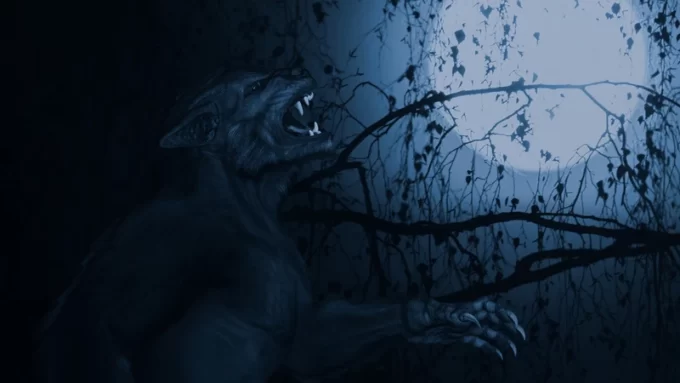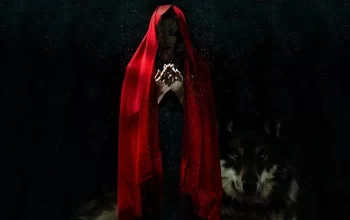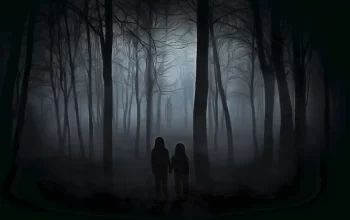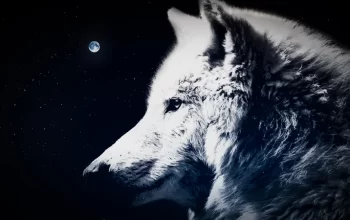
Mythological entities and fairy tale characters are important in that they carry traces of the social subconscious of the culture they belong to. Societies living in similar sociocultural conditions often believed in similar scary entities. For this reason, similar entities have appeared in the literature under different names in many communities whose roots extend to the Eurasian steppes. As a result of cultural interaction, these have evolved into today’s popular horror characters such as vampires and werewolves.
Aldacı Han and Spirits Day

Aldacı Han is the name of a mythological entity in Turkic and Altai myths. It is believed that he was sent by the god of the underworld, Erlik Han. Although it is suggested in some texts that he is a kind of death god, this is not true.
In short, Aldacı Han is the entity that corresponds to the angel of death in Turkic mythology. As can be expected, he is in charge of collecting the souls of those whose death time has come.
In popular culture, angels of death are often portrayed as a robed skeleton with a scythe in hand. However, Aldacı Han is depicted as a strong and well-built man, dressed in black, who rides a black horse.
In the past, for 40 days, things could not be taken out of the house where Aldacı Han entered.1 Because it used to be believed that evil spirits under the command of Aldacı Han roam the house for 40 days. When this period was over, Üzüt Bayram, also known as Spirits Day, used to be celebrated by the relatives of the deceased.
See also: Death, Aldacı Han and Spirits Day in Turkic Mythology
In some regions, the house used to be incensed with juniper branches to drive away the spirits under the command of Aldacı Han.2 Even today, juniper is used in many communities for spiritual cleansing.
Alkarısı: She Eats Livers of the Babies

Alkarısı, also known as Albis, is the name of a witch-like evil woman dressed in red in Turkic mythology. She is usually depicted as ugly, like other evil mythological creatures, but is sometimes said to be lewd and seductive, like a succubus.
Alkarısı always haunts pregnant women, puerperant women or children.
See also: Alkarısı: A Witch-like Woman in Turkic Mythology
The main protein source of Alkarısı is liver. It is the greatest pleasure for her to eat the livers of newborn babies. But sometimes she may also take the liver of the woman giving birth.
Demirkıynak
Demirkıynak or Temirkıynak is the name of a legendary evil woman. She is known as Demirtırnak in Anatolia, and Jeztırnak in Kazakhstan and Kyrgyzstan. It is believed that she is afraid of water. It is said that she is the daughter or sister of a legendary giant named Tepegöz. She is depicted as a demonic creature living in the forest. Her fingernails are made of iron.
Her name is frequently mentioned in the legends of Çanakkale and Balıkesir in Anatolia. It is recommended to run to the nearest water source such as a lake, river or sea, when Demirkıynak is seen.
According to the Azerbaijan-born philologist Beydili, Demirkıynak is of shamanistic origin and is related to the daughters of Erlik, the god of the underground.3
Erbörü and the İtbarak People

Erbörü is the Turkish equivalent of werewolf. It is derived from the word “er” meaning man and “börü” meaning wolf in Old Turkic language.
Another creature resembling werewolves called Erbörü are the people of İtbarak. According to legends, İtbarak is the name of a dog-headed people living in the dark lands of Northwest Asia. Beyond this region is the realm of strange non-human creatures.4
Arçura: A Forest Spirit

Arçura is a forest spirit in Turkic mythology. It is also known as Arçuri, Arçuray and Arsuri.
Arçura is usually depicted as an anthropomorphic figure whose body is covered with long hair. In this respect, it is similar to the Karakoncolos in Anatolian and Greek folklore. Except for being covered with long hairs, its physical features vary from region to region. It is said to be as tall as trees in some regions and as short as grass in others. Its arms and hair are long up to her knees.
Arçura usually lives in forests and valleys. It may kill people it wants to harm by tickling them. Like many evil creatures, it is afraid of water. 5
Although Arçura is often referred to as evil, it also has positive qualities in terms of protecting wildlife and forests.
Abra and Yutpa

Abra and Yutpa are two big underground monsters in Turkic mythology and Altaic shamanism. They are depicted like snakes, dragons and crocodiles.6
Abra and Yutpa are known as greedy monsters who devour everything they see. No matter what they eat, they are not satisfied. Both of them live in the underground sea called Pay Tengis, near the river called Toybadım. They guard the iron-made black palace of Erlik Han.7
Pay Tengis is the name of a great underground sea in Turkic mythology.
Toybadım is the name of an underground river in Turkic mythology. It is made of people’s tears.
Some Altai shamans have accessories symbolizing Abra and Yutpa in their clothes.
Philologist Celal Beydili said that Yutpa is also known as Ker Yutpa and Ker Balık. According to the myths, all living things swallowed by Yutpa continue their existence in the dark realm inside Yutpa.8
Azmıç: The Spirit that Misleads People
Azmıç is an evil spirit that misleads people. There is no exact information about its appearance. It usually takes the form of someone familiar. Traveling alone is not recommended in order not to be fooled by Azmıç’s tricks.
The variant of Azmıç in Kyrgyzstan and Uzbekistan is Azıtkı. Azıtkı takes the form of someone familiar and takes people to a mountain, a river or a cliff and kills them.
Hortlak: The Living Dead

In Turkic folk culture, zombie-like creatures that are believed to come out of their graves and scare people are called hortlak. In Azerbaijan, they are better known by the name of hortdan.
A hortlak is a person who emerges from the tomb, usually shortly after burial, before the corpse has yet turned into a skeleton. It is said that those who do evil in this world and do not deserve to go to heaven can turn into a hortlak after burial.
A hortlak can walk, run, and ride just like an ordinary person. In this respect, they differ from zombies. In some regions, it is believed that they drink blood like vampires.
Hortlak belief is widespread in Eastern Anatolia and Black Sea regions. In Giresun, rumors are common that a soldier who sided with the Russians during the war turns into a hortlak after he dies.
Opkan: It Causes Psychological Epidemics
Opkan is a variant or similar of the Ubır mentioned below. It comes like a wind and corrupts people’s minds.9
Ancient Turks used to believe that Opkan would cause psychological and epidemic diseases. Some used to sacrifice sheep to protect themselves from Opkan.
Ubır: He is Always Hungry
Ubır, also known as Obur and Vupar, is similar to vampires in popular culture. It used to be believed that a witch or sinner who died would turn into an ubır in the grave. Therefore, if a deceased is found to have turned into an ubır, the best way to neutralize him is to open his grave and hammer nails into his coffin.1
The most important characteristic of an ubır is his endless hunger. An ubır is always hungry and always looking for something to eat. It is said that he inhales the clouds in the atmosphere to quench his thirst and causes drought. This is why someone who can’t gain weight despite eating a lot is likened to an ubır.
Many ubır-like creatures are found in the legends of societies in the Eurasian Steppes and Eastern Europe.
Ubır is sometimes depicted as a long-tailed and flying creature, and sometimes as a man-eating and blood-drinking vampire.10 11
Ubır is better known as Obur in and around Rize and is similar to hortlak. It is said that he was disgusted with onions and disappeared when the sun came up.12
Yelbegen: A Man-Eating Giant
Yelbegen is a multi-headed giant in Turkic mythology. He is also known as Yilbigen and Çelbegen.
Yelbegen is one of the oldest demonic creatures in Turkic folklore. He can eat anything that comes its way, including the Moon and the Sun. It used to be believed that Yelbegen eats the Moon during a lunar eclipse and eats the Sun during a solar eclipse.
According to some old Turkic fairy tales Yelbegen usually eats snakes and frogs, but also likes human flesh.
- “Türk Söylence Sözlüğü“, Deniz KARAKURT[↩][↩]
- “Eski Türk Dini Tarihi”, Abdülkadir İNAN, ISBN: 9786056600975[↩]
- “Türk Mifoloji Sözlüyü”, Celal BEYDİLİ, Azerbaycan Milli Elmler Akademiyası, 5806615537[↩]
- “Türk Mitolojisi, Cilt II”, Bahaeddin ÖGEL, ISBN: 9789751628497[↩]
- “Arçura/Şüräle: Mythical Spirits Of The Volga-Ural Forests”, Rustem SULTEE, Acta Orientalia Academiae Scientiarum Hung. Vol 71, 2018[↩]
- “Türk Mitolojisi, Cilt 1”, Bahaeddin ÖGEL, Türk Tarih Kurumu, ISBN 9789751601155[↩]
- “Материалы по Шаманству у Алтайцев”, А.В. АНОХИН, Рипол Классик, ISBN: 9785458246163[↩]
- “Türk Mifoloji Sözlüyü”, Celal BEYDİLİ, Azerbaycan Milli Elmler Akademiyası, 5806615537[↩]
- “Türk Söylence Sözlüğü”, Deniz KARAKURT[↩]
- “Türk Kültüründe Hortlak-Cadı İnanışları”, Mehmet Berk YALTIRIK, Tarih Okulu Dergisi, Aralık 2013[↩]
- “Anadolu, Tatar (Kazan) ve Başkurt Türklerinin Masallarında İnsan Yeme (Yamyamlık) Motifi”, Gülhan ATNUR[↩]
- “Eski Türk İnançlarının Rize ve Yöresi Halk Kültüründe İzleri”, Yaşar KALAFAT, Rize Sempozyumu, 2006[↩]



